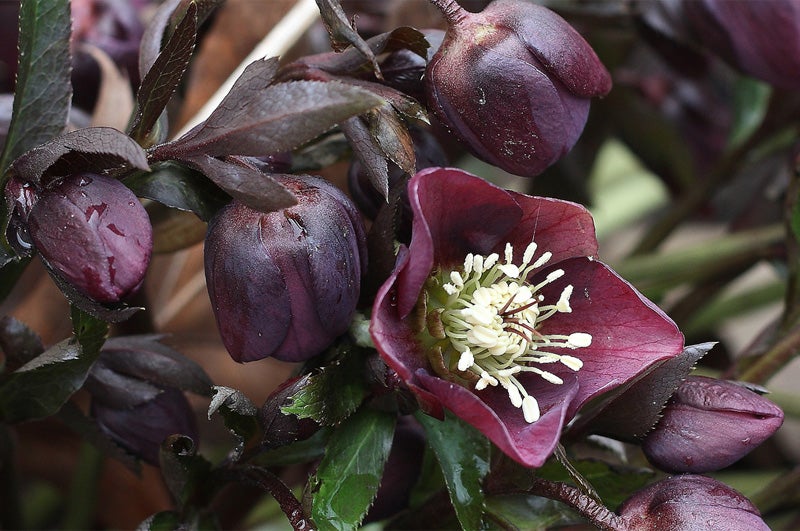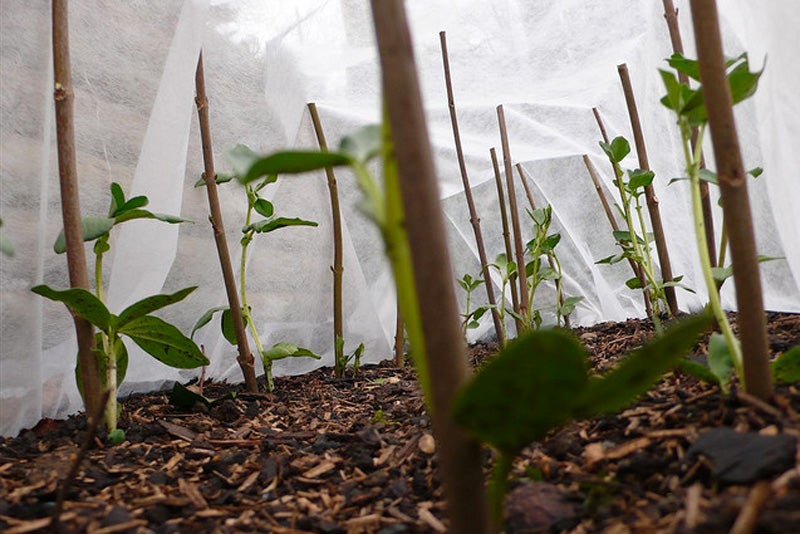How to care for the famed Christmas rose
ListenMike explains when and how to plant your Christmas blue spruce, how to extend your growing season with garden fleece, why it’s OK to use oak leaves in your compost pile, how to plan a rain garden for your property, why you should get rid of your bird feeder and how to care for the famed Christmas rose.
Question of the Week:
“I was in a supermarket today and they were selling flowering plants of a specific variety of the Christmas Rose [Helleborus niger] I had been looking for. I picked up three and want to plant them in the garden, but it’s covered in snow and ice right now. I have a feeling that plants in flower have not been hardened off enough to move outside (but I don’t know for sure). What would be the best way to keep them healthy until I can plant them in the spring? Or should I move them outside—to a spot that’s out of the wind; maybe with a towel over them at night? Many thanks!”
— Leon in State College, PA
How to care for Christmas rose past the holiday season »
Highlights from show for January 4, 2014:
When and how to plant your Christmas blue spruce
Hank from Philadelphia, Pennsylvania just bought a potted baby blue spruce and would like to plant it on his property up in the Poconos. He explained that the tree was kept outside but then brought in for a few days to use as his Christmas tree. Mike explains that the tree needs to be taken back outside, but in stages to as to not shock the tree with the temperature difference. Mike says: “Although the blue spruce is very hardy, it can’t go from summer to winter instantly.” He advises Hank to leave the tree outdoors for short stretches of time to acclimate the tree to the cold weather, and then the arrange to store the plant outdoors until it’s ready for planting in the spring. Mike says: “All you have to do is dig a hole and drop the pot down into the hole. It will not survive above ground with the roots exposed, but if you get the roots below the soil line and you’ve acclimated it — you’ve reversed hardened it off, so to speak — then it will be fine as long as those roots are below the soil line. So you want to dig a hole that’s as big as the pot — and you don’t have to take it out of the pot, this will keep it nice and easy — drop it pot and all into the hole, fill in around it, and then just leave it alone. And then in the springtime, … then take it up and plant it in its permanent location.”
Extend your growing season with garden fleece
Cecily from Centreville, Maryland called in to share her secret for gardening through the winter: Garden fleece! Mike agreed, saying: “Grow covers come in different weights. A very lightweight for a normal spring and a normal fall, and then a heavyweight that can keep a lot of crops like broccoli, brussel sprouts and especially spinach alive over the wintertime in a climate like yours … For many of us, there’s no reason you have to stop growing over winter. You just need something like a cold frame or a little hoop house or these grow covers. And I think people would be shocked at how much they can extend the season.”
Using oak leaves in your compost pile
Elle from Beaver Island, Michigan uses shredded leaves for her mulch and compost mixtures, but was advised that oak leaves should not be included in the mix because they are too acidic. She wants to know if she should follow this advice, or if the oak leaves are OK. After learning that her garden has been performing well, Mike says: “Oak leaves are more acidic than leaves of other plants, and they’re also much more leathery. It’s a little bit more work to shred up an oak leaf efficiently than it is the other leaves … I have found that when there is a pH imbalance it shows up right away. I can tell you right away they’re wrong about the compost; they’re just dead wrong. One of the most miraculous things that happens when you combine the right ingredients — say, lots of shredded leaves with lots of fresh horse manure, or lots of shredded leaves with lots of spent coffee grounds — you’re dealing with acidity on one end and alkalinity on the other, all these different nutrients.”
Installing a rain garden
Jerry from Indiana has a canal in his backyard that he’d like to plant some kind of grass or water-loving plant in to spruce up this area of his property. He explains that the canal is 2-3 feet deep and 8 feet wide and stays moist all summer, but will fill and overflow with water in the spring. Mike recommends that Jerry investigate rain gardens to learn about plants that can survive dry times and also survive being completely submerged in water. He also advises Jerry to contact his local extension service to see what local species are recommended. Mike congratulates Jerry on doing his homework before jumping into this project and says: “You have an opportunity to plant something very unique … A lot of these plants are beautiful bloomers, attract a lot of wildlife — I think you’re going to do great.”
Use an electric hedge clipper to cut back ivy efficiently
Janet from Havertown, Pennsylvania called in to respond to a previous caller’s problem with clearing ivy. The previous caller had been spending 2 to 3 hours a day removing ivy to prevent it from completely taking over her property. When Janet was listening, she said a light bulb went on over her head. Janet advises: “Use your [electric] hedge clipper because it will trim it neatly, it’ll get through the woody stems of the ivy, and you’ll be done in a lot less than those 2-3 hours a day!” Mike agrees that this is an efficient technique, but warns that the clippings need to be cleaned up well so that the clippings don’t take root and spread.
Why you should get rid of your bird feeder
Jean from Nashville, Tennessee has a chipmunk problem. They’re digging around in her flower pots and garden and she’d like to know how to get rid of them. When she mentions that she also has squirrels attacking her birdfeeder, Mike zeroes in on the core issue: “You’re feeding seed to the birds: That’s encouraging both squirrels and chipmunks. And I have to be honest, if they’re just bird feeders that the squirrels and chipmunks just scatter stuff all around, then you can also get mice and rats and voles. So I know it’s not the world’s most popular position, but my feeling about birds is to feed them suet in the wintertime when their natural food is at an all time low and have fresh water available for them all year long.” Mike explains that leaving bird seed out in feeders attracts the chipmunks and squirrels and encourages them to bury whatever they are unable to eat. That’s why Janet is seeing these pests digging in her pots.
WHYY is your source for fact-based, in-depth journalism and information. As a nonprofit organization, we rely on financial support from readers like you. Please give today.





